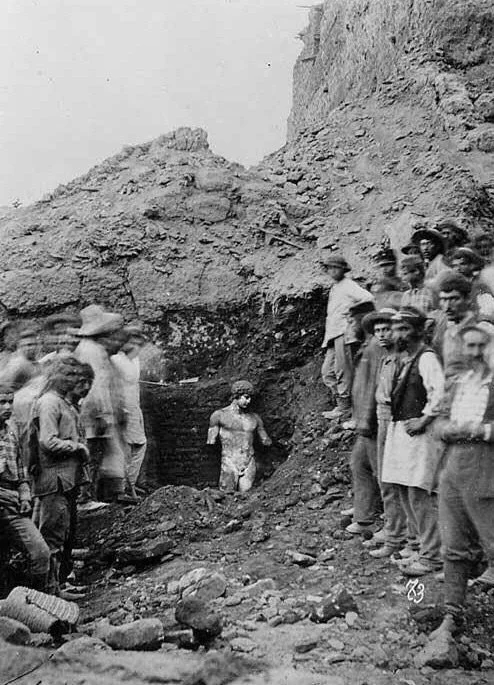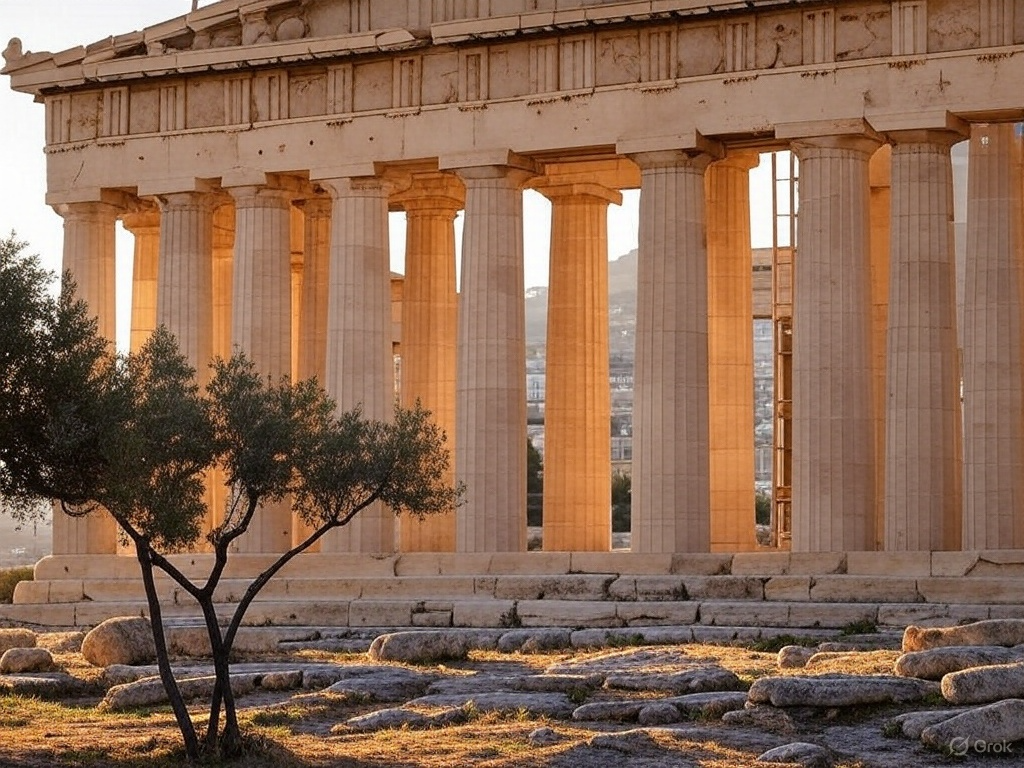Scattered around the globe, some 55,000 museums host a vast collection of humanity’s historical treasures. Statues, manuscripts, weapons, jewelry, art, photographs and letters are just some of the artifacts on display, paying tribute to human existence.
Some pieces are passed down from generation to generation, some unearthed thousands of years from their creation, while others await to be discovered. Archaeological sites provide the bulk of ancient finds, revealing countless artifacts that survived only because they were buried beneath the earth’s surface.
It comes as no surprise then that the priceless relics of Delphi owe their preservation to a catastrophic earthquake that covered parts of the sacred area, saving them from the hands of passersby, from common thieves to powerful rulers such as the Phocians (356 BC), Lucius Cornelius (86 BC), Nero (66 AD) and Constantine the Great (324 AD), who pillaged the site over the years.
The archaeological site of Delphi was no secret to those whose travels brought them through Greece, visitors of the likes of famous 15th century Italian antiquarian Ciriaco de' Pizzicolli, for example, though lying beneath its surfaced ruins and grass-speckled earth was a hidden world steeped in mystery.
A symbol of the ancient Hellenic world and religious center of profound universal significance, Delphi possesses a rich history that runs 3,000 years deep. The site was inhabited during the Mycenaean Period in the late Bronze Age of Ancient Greece (14th - 11th century BC), serving as a place of worship for the goddess of earth, Gaia, culminating in Pan-Hellenic and subsequently international fame from the 8th century BC to the 4th century AD, as home of the Oracle Pythia.
Delphi was invaded by the Persians in 480 BC and the Gauls in 279 BC before Romans took over in 191 BC. Once a site of immense cultural importance, Delphi’s popularity began to decline after a 393 AD decree by Roman Emperor Theodosius I called for the shutdown of temples and ban of pagan rituals. The site was inhabited by Christian settlers thereafter and abandoned by the 2th century AD. Frankish rule was replaced by that of the Ottomans by 1410, and the area remained uninhabited until a medieval settlement gradually grew to become the 16th century village of Kastri.
A collection of buildings and monuments commemorating gods, victories and significant events, the site and its mysterious allure were the object of interest among a group of 19th century French archaeologists who took it upon themselves to bring to light the story of Delphi.
Naturally, the villagers of Kastri were not thrilled to hear that foreigners wanted them relocated. Some preliminary excavations were carried out in 1840 and 1860 around the Delphi's Polygonal Wall. Calling for the dismantling of an entire village built on ancient ruins, however, visions of a complete excavation seemed dream-like. As fate would have it, an 1870 earthquake destroyed much of the village, opening the doors of opportunity for what would reveal the ancient wonders of Delphi.
A collaboration between France and the fairly young modern Greek State commenced when Charilaos Trikoupis assumed office as Prime Minister of Greece in 1875. Five years later, B. Haussoulier began excavating the Stoa of the Athenians, an ancient portico near Delphi's Sanctuary of Apollo.
News made its rounds across the Atlantic where a group of Americans who fancied the ancient world, dreamed of discovering its past. Led by Charles Eliot Norton, president of the Archaeological Institute of America, and a founding member of the American School of Classical Studies in Athens (ASCSA), campaigns were launched in New York and Boston in the late 1880s to raise funds to unearth Delphi in a race against the French.
A passage in an 1890 issue of the Harvard Daily Crimson, however, speaks of a halt in negotiations. “Harvard College has raised the sum promised by her for the excavations at Delphi, and not only she but also America stand ready with the promised sum to begin the work. But affairs have come to a standstill, owing to a change of ministry in Greece,” the excerpt notes.
The Americans were not only unable to spark enough interest to secure funding to top the French offer, but unlike the French, had the disadvantage of a lack of passionate negotiators stationed in Greece at the time.
“In the end, Charles Eliot Norton’s passion for Delphi was in itself not sufficient to inspire the Americans who were negotiating in Greece. Simply put, the French had the better team,” says Dr. Natalia Vogeikoff-Brogan, an archivist at ASCSA.
By February 1891, France had approved an agreement allotting funds to expropriate Delphi. The Greek Parliament passed the agreement in March of that year, marking the launch of the Great Excavation.
THE GREAT EXCAVATION
Known as La Grande Fouille, the Great Excavation of Delphi was realized under the guidance of archaeologist Theophile Homolle, who served as director of the French School of Athens from 1892 to 1903.
Preparations for the Great Excavation included the removal of the entire settlement of some 400 houses comprising the village of Kastri, beginning in 1892. The site was cleared of rubble and earth by mini railway, revealing a number of structures including a polygonal wall, theater, stadium, gymnasium, a sanctuary of Athena Pronaia, a temple of Apollo, and various treasuries.
A sacred location visited by the rulers of men who would leave behind commemorative offerings in return for an oracle’s prophecy, Delphi was a treasure trove full of riches, adorned with votive buildings and statues created by the era’s most renowned artists.
Excavations from April to November of 1893 dug up a large section of the Treasury of the Athenians, the Sibyl’s Rock and Altar of the Chians. The next years revealed buildings along the Sacred Way, as well as some of the site’s most treasured sculptures including those of the archaic stone Kouroi (Kleobis and Biton), bronze Charioteer of Delphi, and marble Roman sculpture of Antinous. An excavation of the ancient stadium and gymnasium followed. Last but not least was the Sanctuary of Athena Pronaia, revealing the site’s treasuries.
An 1894 passage in the Journal of Hellenic Studies describes the historical commencement of the Great Excavation at Delphi.
“The excavations of the French School at Delphi are now in full activity. They have been looked forward to for years with the keenest interest, but hitherto there has been nothing to record but negotiations and preparations. Now that the work has actually begun, it has proved that even the most sanguine anticipations were not unfounded. The find in inscriptions and in sculpture is of extraordinary richness and interest, and will form an epoch in the history of archaeological discovery…” it reads.
Lasting a decade, the Great Excavation’s incredible discoveries were put on display at Delphi’s first museum. Featured in a December 1905 issue of the Scientific American, the excavations at Delphi were a historical accomplishment that unearthed some of the secrets of a sacred location known as "the earth’s navel," leading the way for the creation of the Archaeological Museum of Delphi. Set in perfect harmony with its surrounding natural environment in the prefecture of Phokida, Delphi is a protected UNESCO World Heritage Site since 1987.
Source: portesmagazine













